#zhang xin yuan
Explore tagged Tumblr posts
Text





Guardians of The Dafeng | Please be careful with your sword case!
#he knows it's useless to pick a fight#lol#Da Feng Da Geng Ren#大奉打更人#cdrama#guardians of the dafeng#wang hedi#dylan wang#character: xu qi an#edward zhang#character: chu yuan zhen#wei zi xin#character: jin lian
81 notes
·
View notes
Text







Cdrama: My Journey To You (2023)
THE Iconic scene of THE Gong Brothers🔥 #RyanCheng #TianJiaRui #MyJourneyToYou
Watch this video on Youtube: https://www.youtube.com/shorts/jQAhYv3CrSs
#My Journey to You#云之羽#Yun Zhi Yu#Cloud Feather#Half of Us#雲之羽#2023#iQiyi#WeTV#cdrama#chinese drama#youtube#shorts#short video#Esther Yu#Yu Shu Xin#Yun Wei Shan#Zhang Ling He#Gong Zi Yu#Ryan Cheng#Yang Hui Xiang#Gong Shang Jue#Tian Jia Rui#Gong Yuan Zheng
37 notes
·
View notes
Text



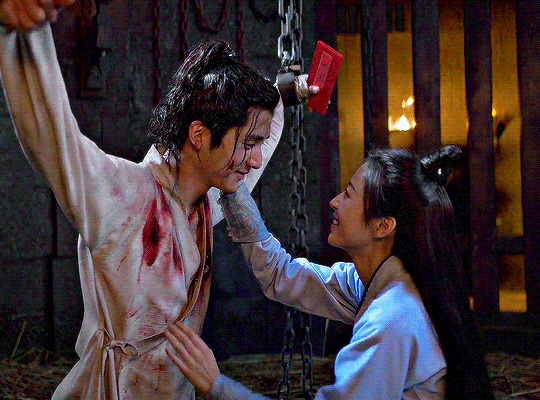
Let's get married. Here? Now? I told you. It's a beautiful, sunny day. Formal proposal. Check if the gods are on our side. Send your betrothal gifts. I didn't do any of them. Skip Them. I was always the one to not obey to dogmatic rules. I didn't think you'd be even crazier than me. Then it's a yes? Let me think about it. What am I saying? Of course. I'd love to. Look at you. You can't even perform the bowing ritual in our wedding.
#young blood#young blood 2#大宋少年志2#cdramaedit#cdramasource#chinesemedia#chineseartistsinc#asiandramaedit#asiandramasource#zhou yu tong#zhang xin cheng#steven zhang#zhao jian x yuan zhongxin#dailyasiandramas#pocedit#mystuff#gifs#youngblood*#cdramas*#jianxin*#I'M OBSESSED#this scene was EVERYTHING#i wasn't even that obsessed with them in season 1 but now......#they got me#so beautiful oh my goddddd#also i'm more proud of the caption than of the gifset#the subs suck and i had to translate this whole thing myself (thanks mischa for the help) to make it make sense#like @mango tv hire someone istg
91 notes
·
View notes
Text

Fall In Love. 9/10
Story: 10
Acting: 10
Chemistry: 10
Comparable to: Maids Revenge (cdrama) ; Cruel Romance (cdrama)
One of my favorite historical cdrama’s. It takes place in the 1920s (republican era) which is an unique era of a cdrama you don’t see many of. The storyline is executed excellently with just enough mystery, action, melodrama, and romance. The chemistry between the two main leads are brilliantly casted and oofing are they oozing with smexyness together. It does take a few episodes for the momentum to get into, but it’s overall an outstanding drama where you won’t want to stop watching. Warning there also is sensitive subjects of attempted rape and suicide.
#fall in love#Yi jian qing xin#cdrama#viki#chen xing xu#zhang jing yi#evan lin#yuan ruo hang#cai yu hang#chen xin yu#ma yue#dai ya qi#shao wei tong#historical#romantic drama#melodrama#love triangle#sensitive subjects#political#multiple couples#action#emotional#warning emotional#rec#fav#❤️
4 notes
·
View notes
Text
April 14, Xi'an, China, Shaanxi History Museum, Qin and Han Dynasties Branch (Part 3 – Innovations and Philosophies):
(Edit: sorry this post came out so late, I got hit by the truck named life and had to get some rest, and this post in itself took some effort to research. But anyway it's finally up, please enjoy!)
A little background first, because this naming might lead to some confusions.....when you see location adjectives like "eastern", "western", "northern", "southern" added to the front of Zhou dynasty, Han dynasty, Song dynasty, and Jin/晋 dynasty, it just means the location of the capital city has changed. For example Han dynasty had its capital at Chang'an (Xi'an today) in the beginning, but after the very brief but not officially recognized "Xin dynasty" (9 - 23 AD; not officially recognized in traditional Chinese historiography, it's usually seen as a part of Han dynasty), Luoyang became the new capital. Because Chang'an is geographically to the west of Luoyang, the Han dynasty pre-Xin is called Western Han dynasty (202 BC - 8 AD), and the Han dynasty post-Xin is called Eastern Han dynasty (25 - 220 AD). As you can see here, in these cases this sort of adjective is simply used to indicate different time periods in the same dynasty.
Model of a dragonbone water lift/龙骨水车, Eastern Han dynasty. This is mainly used to push water up to higher elevations for the purpose of irrigation:
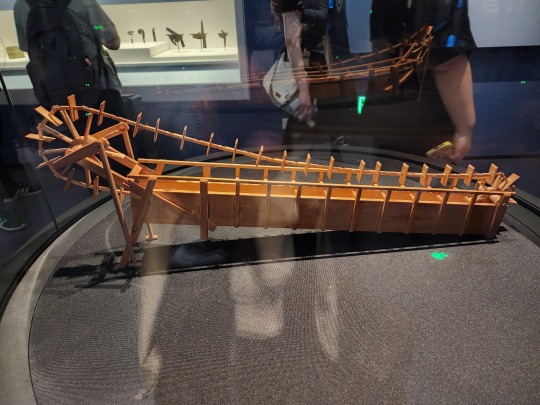
Model of a water-powered bellows/冶铁水排, Eastern Han dynasty. Just as the name implies, as flowing water pushes the water wheel around, the parts connected to the axle will pull and push on the bellows alternately, delivering more air to the furnace for the purpose of casting iron.

The Nine Chapters on the Mathematical Art/《九章算术》, Fangcheng/方程 chapter. It’s a compilation of the work of many scholars from 10 th century BC until 2 nd century AD, and while the earliest authors are unknown, it has been edited and supplemented by known scholars during Western Han dynasty (also when the final version of this book was compiled), then commented on by scholars during Three Kingdoms period (Kingdom of Wei) and Tang dynasty. The final version contains 246 example problems and solutions that focus on practical applications, for example measuring land, surveying land, construction, trading, and distributing taxes. This focus on practicality is because it has been used as a textbook to train civil servants. Note that during Han dynasty, fangcheng means the method of solving systems of linear equations; today, fangcheng simply means equation. For anyone who wants to know a little more about this book and math in ancient China, here’s an article about it. (link goes to pdf)
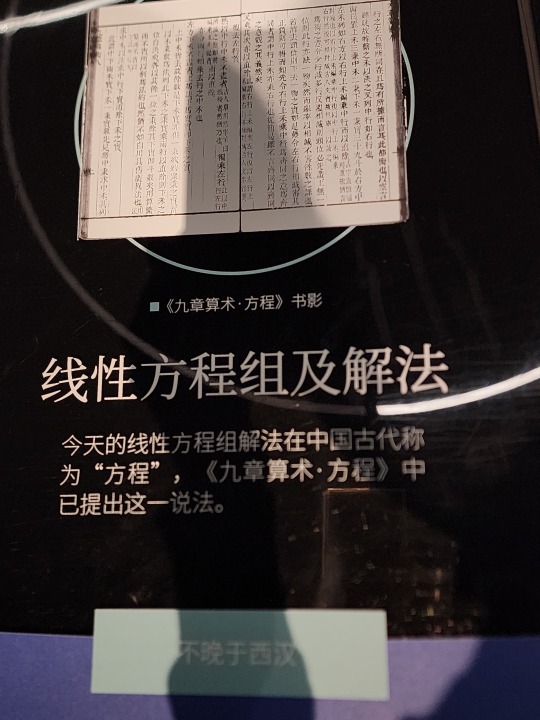
Diagram of a circle in a right triangle (called “勾股容圆” in Chinese), from the book Ceyuan Haijing/《测圆海镜》 by Yuan-era mathematician Li Ye/李冶 (his name was originally Li Zhi/李治) in 1248. Note that Pythagorean Theorem was known by the name Gougu Theorem/勾股定理 in ancient China, where gou/勾 and gu/股 mean the shorter and longer legs of the right triangle respectively, and the hypotenuse is named xian/弦 (unlike what the above linked article suggests, this naming has more to do with the ancient Chinese percussion instrument qing/磬, which is shaped similar to a right triangle). Gougu Theorem was recorded in the ancient Chinese mathematical work Zhoubi Suanjing/《周髀算经》, and the name Gougu Theorem is still used in China today.

Diagram of the proof for Gougu Theorem in Zhoubi Suanjing. The sentence on the left translates to "gou (shorter leg) squared and gu (longer leg) squared makes up xian (hypotenuse) squared", which is basically the equation a² + b² = c². Note that the character for "squared" here (mi/幂) means "power" today.

This is a diagram of Zhang Heng’s seismoscope, called houfeng didong yi/候风地动仪 (lit. “instrument that measures the winds and the movements of the earth”). It was invented during Eastern Han dynasty, but no artifact of houfeng didong yi has been discovered yet, this is presumably due to constant wars at the end of Eastern Han dynasty. All models and diagrams that exist right now are what historians and seismologists think it should look like based on descriptions from Eastern Han dynasty. This diagram is based on the most popular model by Wang Zhenduo that has an inverted column at the center, but this model has been widely criticized for its ability to actually detect earthquakes. A newer model that came out in 2005 with a swinging column pendulum in the center has shown the ability to detect earthquakes, but has yet to demonstrate ability to reliably detect the direction where the waves originate, and is also inconsistent with the descriptions recorded in ancient texts. What houfeng didong yi really looks like and how it really works remains a mystery.

Xin dynasty bronze calipers, the earliest sliding caliper found as of now (not the earliest caliper btw). This diagram is the line drawing of the actual artifact (right).


Ancient Chinese "Jacquard" loom (called 提花机 or simply 花机 in Chinese, lit. "raise pattern machine"), which first appeared no later than 1st century BC. The illustration here is from the Ming-era (1368 - 1644) encyclopedia Tiangong Kaiwu/《天工开物》. Basically it's a giant loom operated by two people, the person below is the weaver, and the person sitting atop is the one who controls which warp threads should be lifted at what time (all already determined at the designing stage before any weaving begins), which creates patterns woven into the fabric. Here is a video that briefly shows how this type of loom works (start from around 1:00). For Hanfu lovers, this is how zhuanghua/妆花 fabric used to be woven, and how traditional silk fabrics like yunjin/云锦 continue to be woven. Because it is so labor intensive, real jacquard silk brocade woven this way are extremely expensive, so the vast majority of zhuanghua hanfu on the market are made from machine woven synthetic materials.

Chinese purple is a synthetic pigment with the chemical formula BaCuSi2O6. There's also a Chinese blue pigment. If anyone is interested in the chemistry of these two compounds, here's a paper on the topic. (link goes to pdf)

A list of common colors used in Qin and Han dynasties and the pigments involved. White pigment comes from chalk, lead compounds, and powdered sea shells; green pigment comes from malachite mineral; blue pigment usually comes from azurite mineral; black comes from pine soot and graphite; red comes from cinnabar; ochre comes from hematite; and yellow comes from realgar and orpiment minerals.

Also here are names of different colors and shades during Han dynasty. It's worth noting that qing/青 can mean green (ex: 青草, "green grass"), blue (ex: 青天, "blue sky"), any shade between green and blue, or even black (ex: 青丝, "black hair") in ancient Chinese depending on the context. Today 青 can mean green, blue, and everything in between.

Western Han-era bronze lamp shaped like a goose holding a fish in its beak. This lamp is interesting as the whole thing is hollow, so the smoke from the fire in the lamp (the fish shaped part) will go up into the neck of the goose, then go down into the body of the goose where there's water to catch the smoke, this way the smoke will not be released to the surrounding environment. There are also other lamps from around the same time designed like this, for example the famous gilt bronze lamp that's shaped like a kneeling person holding a lamp.


Part of a Qin-era (?) clay drainage pipe system:
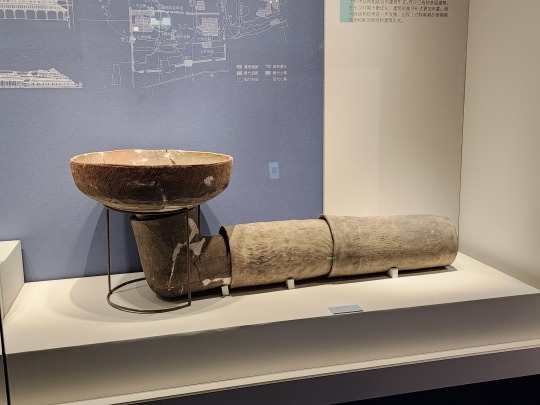
A list of canals that was dug during Warring States period, Qin dynasty, and pre-Emperor Wu of Han Han dynasty (475 - 141 BC). Their purposes vary from transportation to irrigation. The name of the first canal on the list, Hong Gou/鸿沟, has already become a word in Chinese language, a metaphor for a clear separation that cannot be crossed (ex: 不可逾越的鸿沟, meaning "a gulf that cannot be crossed").
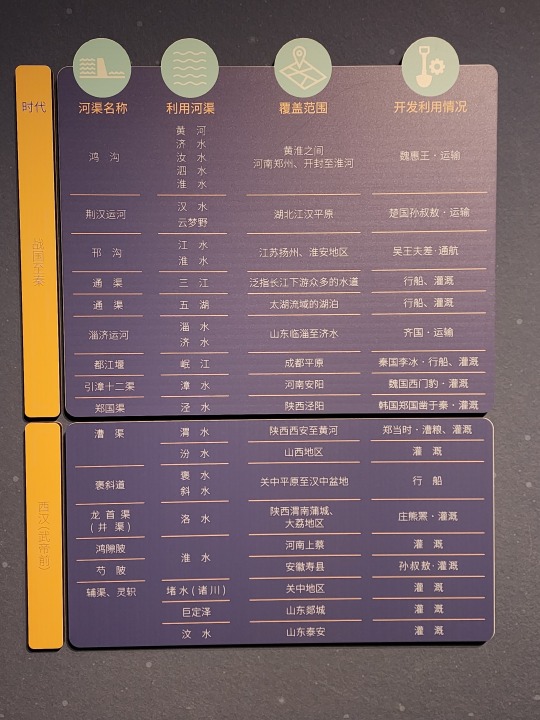
Han-era wooden boat. This boat is special in that its construction has clear inspirations from the ancient Romans, another indication of the amount of information exchange that took place along the Silk Road:

A model that shows how the Great Wall was constructed in Qin dynasty. Laborers would use bamboo to construct a scaffold (bamboo scaffolding is still used in construction today btw, though it's being gradually phased out) so people and materials (stone bricks and dirt) can get up onto the wall. Then the dirt in the middle of the wall would be compressed into rammed earth, called hangtu/夯土. A layer of stone bricks may be added to the outside of the hangtu wall to protect it from the elements. This was also the method of construction for many city walls in ancient China.

A list of the schools of thought that existed during Warring States period, their most influential figures, their scholars, and their most famous works. These include Confucianism (called Ru Jia/儒家 in Chinese; usually the suffix "家" at the end denotes a school of thought, not a religion; the suffix "教" is that one that denotes a religion), Daoism/道家, Legalism (Fa Jia/法家), Mohism/墨家, etc.

The "Five Classics" (五经) in the "Four Books and Five Classics" (四书五经) associated with the Confucian tradition, they are Shijing/《诗经》 (Classic of Poetry), Yijing/《易经》 (also known as I Ching), Shangshu/《尚书》 (Classic of History), Liji/《礼记》 (Book of Rites), and Chunqiu/《春秋》 (Spring and Autumn Annals). The "Four Books" (四书) are Daxue/《大学》 (Great Learning), Zhongyong/《中庸》 (Doctrine of the Mean), Lunyu/《论语》 (Analects), and Mengzi/《孟子》 (known as Mencius).

And finally the souvenir shop! Here's a Chinese chess (xiangqi/象棋) set where the pieces are fashioned like Western chess, in that they actually look like the things they are supposed to represent, compared to traditional Chinese chess pieces where each one is just a round wooden piece with the Chinese character for the piece on top:

A blind box set of small figurines that are supposed to mimic Shang and Zhou era animal-shaped bronze vessels. Fun fact, in Shang dynasty people revered owls, and there was a female general named Fu Hao/妇好 who was buried with an owl-shaped bronze vessel, so that's why this set has three different owls (top left, top right, and middle). I got one of these owls (I love birds so yay!)


And that concludes the museums I visited while in Xi'an!
#2024 china#xi'an#china#shaanxi history museum qin and han dynasties branch#chinese history#chinese culture#chinese language#qin dynasty#han dynasty#warring states period#chinese philosophy#ancient technology#math history#history#culture#language
96 notes
·
View notes
Text
EDIT: how TF did I forget Shang Qinghua
49 notes
·
View notes
Text










“I thought (cat cafe) owners would reach out to me – now it looks like I need to take the initiative and send the (cat’s) resume out,” she lamented to CNN.
Xin says Zhang Bu’er spends her days sleeping and “parkours” at night, making a racket and disturbing her and her husband’s sleep.
More annoyingly for Xin, Zhang Bu’er would always curl up on her laptop when she was working overtime.
“He just lounged around, watching me hustle away like a workhorse,” she said, jokingly.
“(My husband and I) want him to be a working cat to get a taste of the grind and earn his own food.”
Xin said she spends about 500 yuan ($71) per month feeding her two cats.
“I think (Zhang Bu’er) gets too bored during the day,” she said. “A job would help him burn off some energy.”
China’s first cat cafe opened in the southern city of Guangzhou in 2011.
The number of similar establishments has grown by 200% per year in the country, according to CBNData, China’s state-linked financial paper.
As of 2023, there were more than 4,000 cat cafe-related companies in the country.
Editor’s Note: CNN’s Joyce Jiang contributed reporting.
#pet cafe#dog cafe#dogs#cats#animals#snack money#Fuzhou#China#Zhengmaotiaoqian#working pets#cafe owners#pet owners#CBNData#samoyed#shiba inu#tuxedo cat
21 notes
·
View notes
Text
poems in episode one of the story of kunning palace
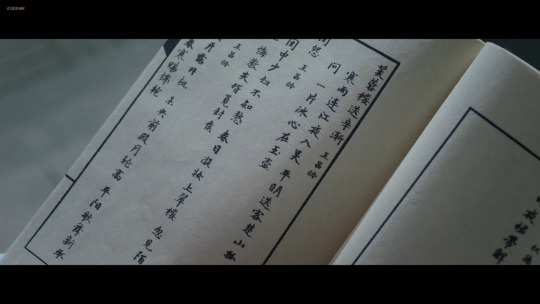
in episode 1 of kunning palace, xuening grabs a book of poems in order to trick her maids into thinking she keeps a ledger. my knowledge of classical chinese isn't particularly high level, but it's good enough to at least identify which poems are on the page that she opens to, and i'm certain they were deliberately chosen because of their relevance to the characters and themes of the show 👀 so i thought i'd do a post about them :)
this page contains three poems by the tang dynasty poet wang changling (698–756): 芙蓉樓送辛漸 (farewell to xin jian at lotus tower); 閨怨 (boudoir lament); and 春宮曲 (spring palace song). detailed analyses under the cut:
1 - 芙蓉樓送辛漸 (farewell to xin jian at lotus tower):
my translation
poem summary: the poet's friend came to wu on a night when cold rain was pouring into the river, and departs again at dawn. the poet accompanies him on his journey as far as the chu mountains [but cannot carry on journeying with him because he must stay at his official post in wu]. as he bids goodbye, he asks his friend to tell his family back in luoyang that his heart is still pure and resolute.
key themes: loneliness and solitude; duty; having a pure heart and noble character
analysis: this one is a fairly famous poem about parting before setting off on a long journey. it's particularly notable for its final line, 一片冰心在玉壺, which roughly translates to "my heart is as pure as a piece of ice within a vessel of jade"... which could easily have been written as a summary of zhang zhe's character.
however! while there's a definite emphasis on having a pure and guiltless heart, when you combine with the previous line, the couplet as a whole also gives a sense that the speaker wishes to be remembered by those they love as someone pure and righteous ("tell my family back in luoyang that my heart is still pure etc"). this seems to be a theme of xuening's second life: wanting to correct her past wrongs and treat the people she cares for better, and to prove to zhang zhe that she can be a good person in future
in particular, this poem makes me think of xuening's last moments in her first life. the poet's final request before he bids farewell to his friend? for his companion to tell his family that he is still noble at heart. xuening's final request before she dies? for xie wei to take her life in exchange for that of zhang zhe, as her way of repenting for being dishonourable and ruining his life... 🤔🤔🤔
2 - 閨怨 (boudoir lament):
poem summary: the young wife in her boudoir knows nothing of sorrow, but as she completes her toilette and ascends the emerald tower, she suddenly sees the hue of poplars and willows on the roadside and regrets letting her husband leave home to pursue official position and power.
key themes: love and marriage; abandonment; ambition (and the effect that ambition has on love)
analysis: it's essentially about how the husband's ambition causes him to abandon his wife to grief and loneliness, which seems like a clear parallel with xuening's willingness to abandon her faithful lovers for the sake of her ambition; there's also the implication that political status is ultimately less meaningful than a loving marriage.
i think it's worth noting that the character 怨 (yuan) in the title is fairly hard to translate, as it implies a mixture of grief and anger/resentment, or even hatred. it's fairly common in boudoir poems about women left behind by their husbands, and in that context it's often translated as 'lament' or 'grief', but i think the ambivalence of the term is fairly important, particularly if you apply it to kunning palace and the mix of grief and anger that xuening inspires in her old lovers in her first life.
3 - 春宮曲 (spring palace song):
poem summary: the wind is mild, the flowers are in full bloom, the moon is full and bright. the emperor has fallen in love with one of his sister's singing serving women, and is showering her with imperial favour and bestowing brocade robes upon her to keep out the spring chill.
key themes: happiness, success, security. (however, with contextual knowledge, there's also the implication of future doom, and that nobody can stay on top of the world forever)
analysis: i didn't quite catch the full significance of this one until i googled it and realised it's a poem about a real historical figure: wei zifu, a song-and-dance girl serving the princess pingyang, who wins the favour of pingyang’s brother, emperor wu of the han dynasty, eventually becoming his second empress (the second-longest serving empress in chinese history!).
wei zifu's story is essentially about a young woman of humble origins who survives numerous palace intrigues and eventually manages to ascend to the position of empress, trusted by the emperor to the extent that she was allowed to rule in his absence. however, after maintaining her position for over three decades, she eventually fell afoul of a conspiracy against her and her son, and committed suicide rather than allowing herself to be deposed.
i mean… the way this links to jiang xuening's first life is so obvious i don't even feel the need to explain it.
#story of kunning palace#cdrama#wang changling#my translations#well. sort of#more like my paraphrases i guess(?)#if i made any mistakes then i apologise! and feel free to correct anything ofc#i'm currently trying my hand at a polished translation of the first poem... i'll post it if it's any good#just need to finish fiddling with it first#王昌齡#宁安如梦#i am loving this drama so far btw <3
121 notes
·
View notes
Text
In support of Hot General Summer (tm)
I realized that my recent poll not only lacked visual support but also left out a lot of my fave cdrama generals. So, in support of my Hot General Summer agenda:
Xiao Qi, Rebel Princess

Wei Wu Ji, Sound of the Desert
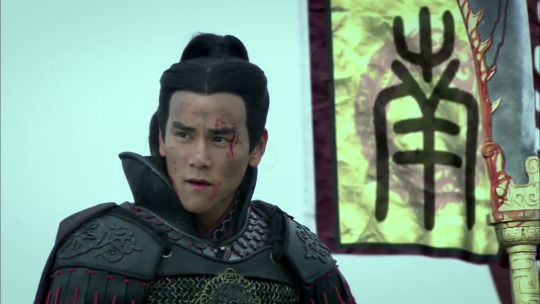
Ling Buyi, Love Like the Galaxy

Zhousheng Chen, One and Only

Zhao Yun, God of War Zhao Yun
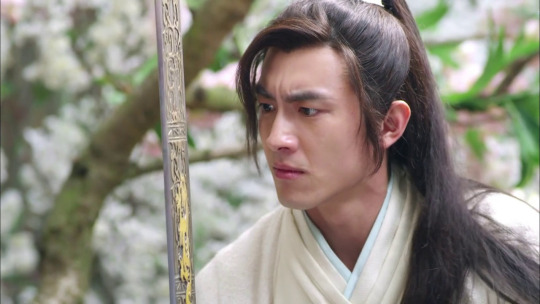
Sima Yi, Secret of Three Kingdoms
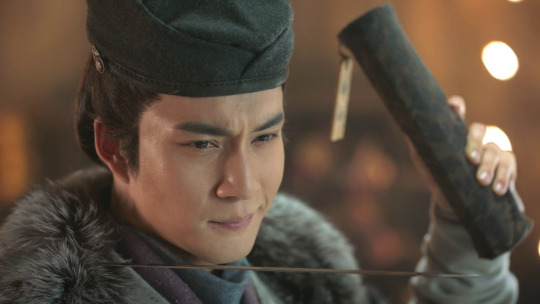
Han De Rang, The Legend of Xiao Chuo

Zhan Beiye, Legend of Fuyao

Gao Chang Gong, Lan Ling Wang

Xiang Yu, Story of Han Dynasty

Cao Pi, The Advisors’ Alliance

Meng Tiang Fang, Ancient Terracotta War Situation
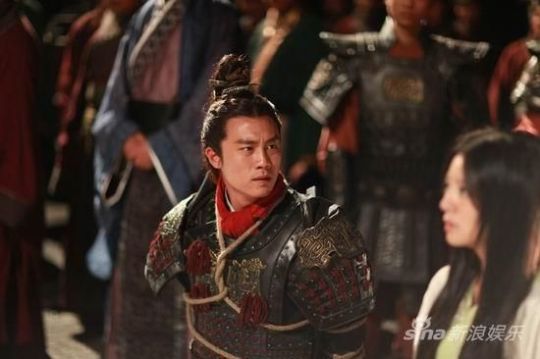
Chu Bei Jie, General and I
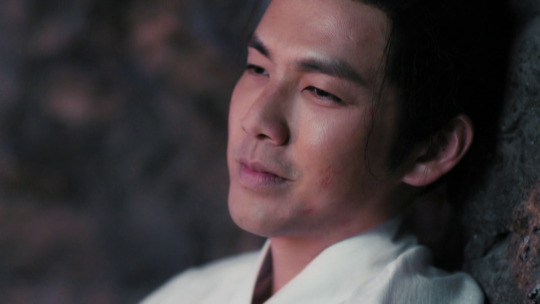
Zhu Zan, Jin Jiu Ling

Wolfie, The Wolf

Xiang Yu, Legend of Chu and Han

Cheng Yi, The Promise of Chang’an

Liu Xiu, Singing All Along
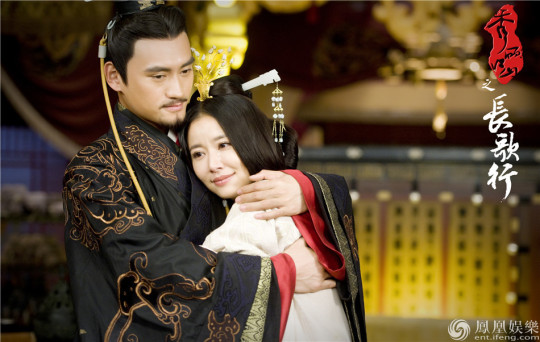
Huo Xin, Painted Skin the Resurrection
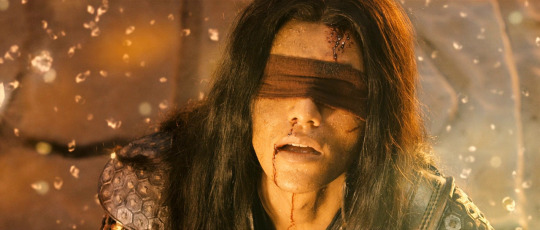
Meng Qi You, Glamorous Imperial Concubine

Yang Bros, The Young Warriors

Weng Gui, Princess Jieyou

Xiao Ping Zhang, Nirvana in Fire 2
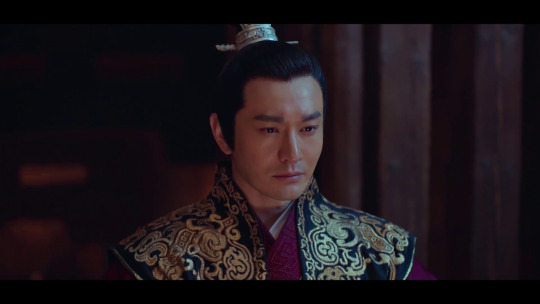
Pei Zhao, Maiden Holmes
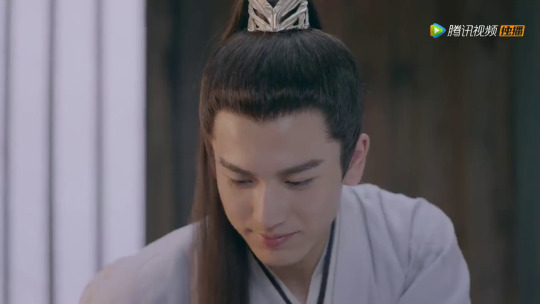
Ji Ye, Novoland Eagle Flag
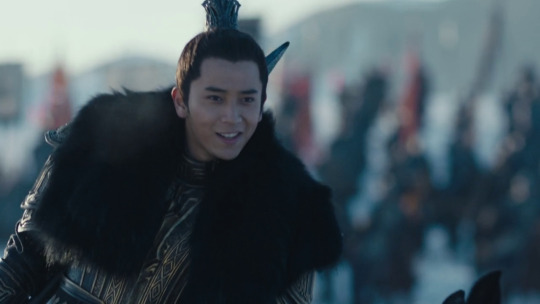
Zhu Qi Zhen, Imperial Doctress (it’s a reach he’s an emperor. But he leads his force in battle and I wanted Wallace Huo there so...)

Yuan Ling, Lost Love in Times

Yi Xiao Chuan, The Myth

Gu Tingye, The Story of Ming Lan

Lu Bu, Three Kingdoms 2010
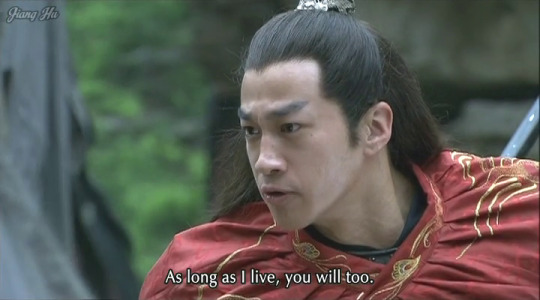
Xu Lingyi, The Sword and the Brocade
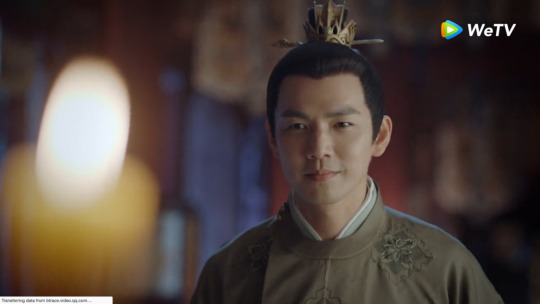
Yue Fei, Patriot Yue Fei
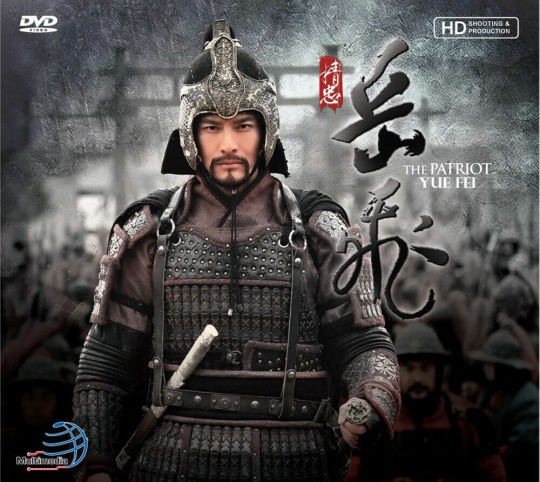
Xiang Yu, The Myth

Ping Zhang, Nirvana in Fire 2
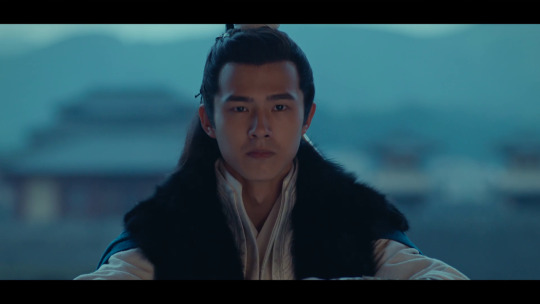
Guo Jing, Legend of Condor Heroes 2008

Xiang Yu, The Legend of Qin
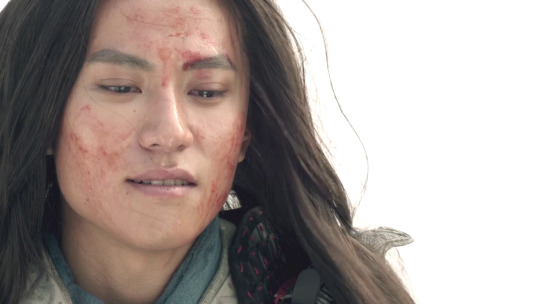
#cdrama#the myth#the legend of qin#nirvana in fire 2#three kingdoms 2010#the story of ming lan#the sword and the brocade#singing all along#patriot yue fei#princess jieyou#general and i#legend of condor heroes#the story of han dynasty#the legend of xiao chuo#novoland eagle flag#ancient terracotta war situation#fight and love with a terracotta warrior#one and only#lan ling wang#legend of chu and han#the wolf#the promise of chang'an#god of war zhao yun#painted skin resurrection#lost love in times#the imperial doctress#glamorous imperial concubine#rebel princess#monarch industry#maiden holmes
179 notes
·
View notes
Text
did frame by frame for the dw trailer because i'm ill so here you go come get your officers:
SHU
Liu Bei/Zhang Fei/Guan Yu: the second shot confirms our favourite boat fights at Chi Bi. Final shot looks like an aged-up version of Guan Yu.




WU
Lu Su/Cheng Pu

Lu Meng(?): fairly certain that's him on the right but we don't get another good shot of him.

Sun Jian: i have to. i have to go.


Sun Quan/Zhou Yu: Gang Ning is visible in the bottom left. Lu Su and Cheng Pu are also visible behind Zhou Yu. I have a feeling that this is the same cinematic as the panning shot of Lu Meng/Cheng Pu/Lu Su. This definitely looks like the prelude to Chi Bi.

WEI
Cao Cao/Xiahou Dun: Dian Wei and Xu Chu are in the first shot, and Zhang Liao is in the second.





Dian Wei: rip. Looks like the ending of Wancheng.

Xun You: my boy. Interestingly looks to be wearing the exact same outfit as DW9 with some colour swaps. Cheng Pu appears to be the same.

OTHER
Zhang Jiao: hi


Dong Zhuo: Looks like they're ditching the silly side to his design and I really hope they make him an actual terror and not a punchline.

Hua Xiong: with this and Cheng Pu + Xun You I think it pretty much confirms everyone from DW9's made it in*, including the unique NPCs.

Yuan Shao: includes a shot without his helmet, shock and horror. The second shot looks to be at Hulao after the three brothers join. There's a generic officer hanging around them here and in the first shot of the three brothers earlier, which is interesting.


Diao Chan: queen

Lu Bu: honestly stunned they didn't give him a more prominent shot.

Unknown: this guy doesn't turn around so I can't tell who he is. He's playable against the Yellow Turbans, and seems to be in Lu Bu's colours and using claws as his weapon. On second look it might be Hua Xiong again?

Unknown: the PC seems to be mourning someone who's dying in a burning building. No idea who this could be or if it's another fictional addition. Seems feminine, could be a female relative of the PC?




Other things of interest
Zhao Yun didn't show up at all, not even in the background
The Guan babies didn't show up once
Cao Cao no longer seems to be voiced by Douglas Rye, fucking rip
This confirms you can play as regular officers and not just the PC; unsure if that's freeplay-exclusive
The music whips
We've seen our PC fighting with the Yellow Turbans, fighting with Shu, fighting with Wei, and fighting against Liu Bei at Chi Bi, which makes me think there is a lot of choice to how you can progress in this
Since we know Jin is deconfirmed and we haven't seen any late-game battles, and there seems to be a lot of branches to replay, I'm wondering if the game ends as early as Chi Bi; my current bet is on Fan Castle
*Because of the early ending I'm betting that Xin Xianying has been cut
9 notes
·
View notes
Text
A little Legend of Fei In Real Life tonight, because I feel like looking at pictures of attractive people. (Skipping the two mains, because it's well-documented what they look like out of costume.)
Zhang Hui Wen / Wu Chuchu

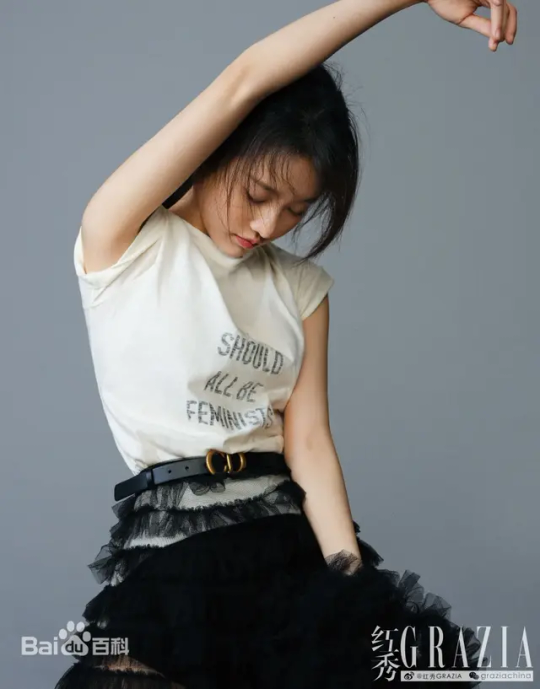
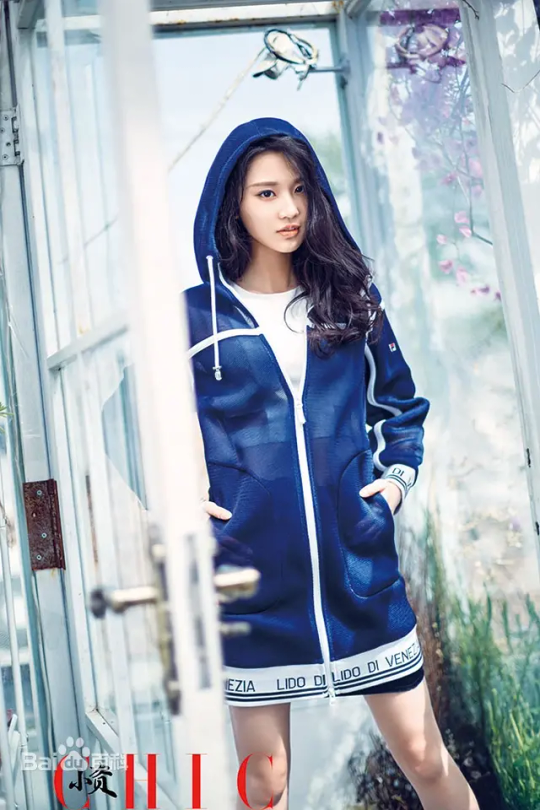
Chen Ruo Xuan / Li Sheng
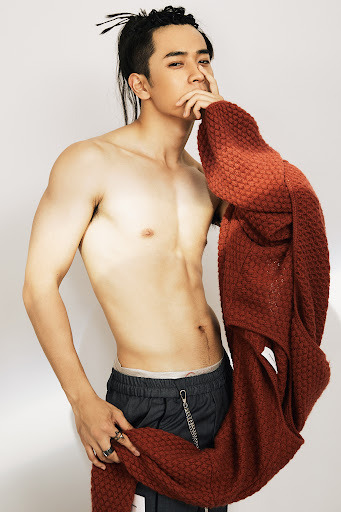
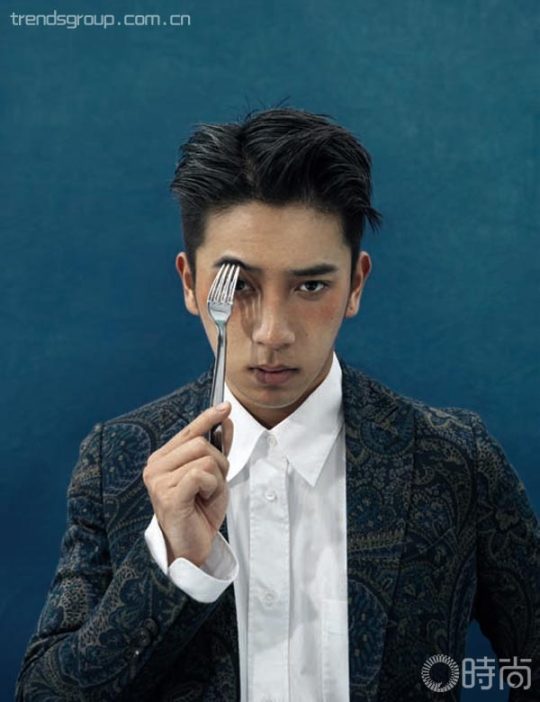

Zhang Xin Yu / Yang Jin

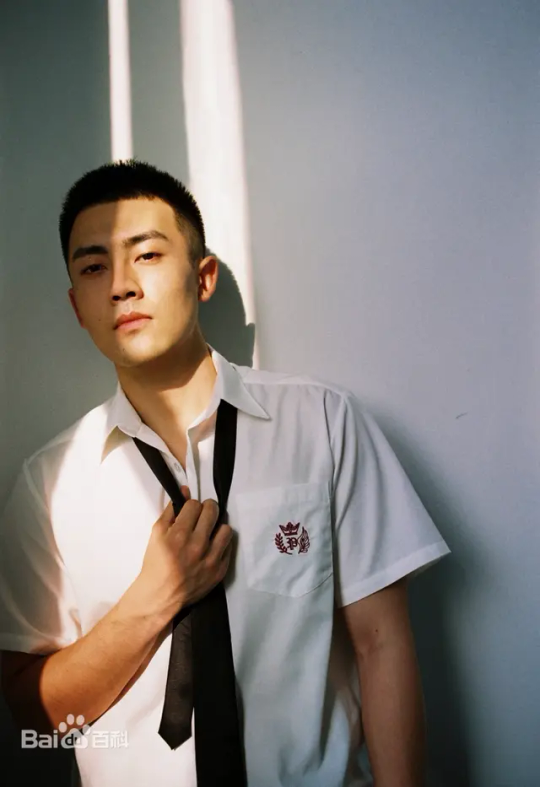
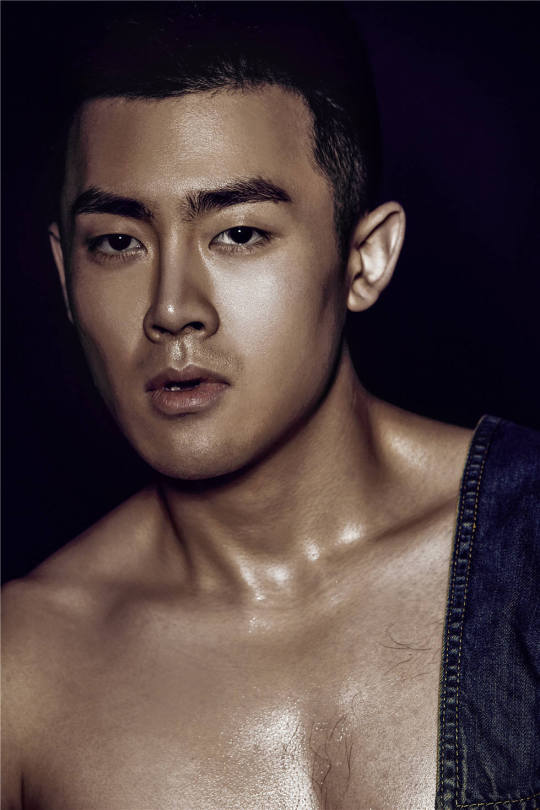
Leng Ji Yuan / Ying Hecong
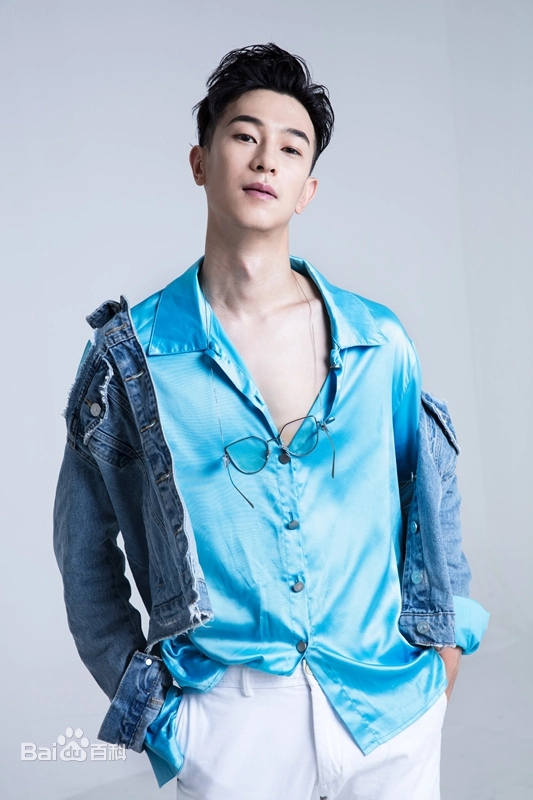
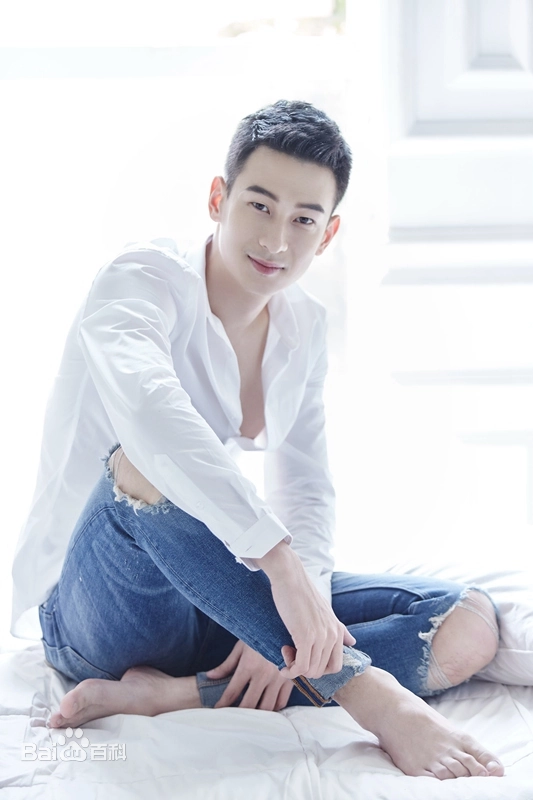
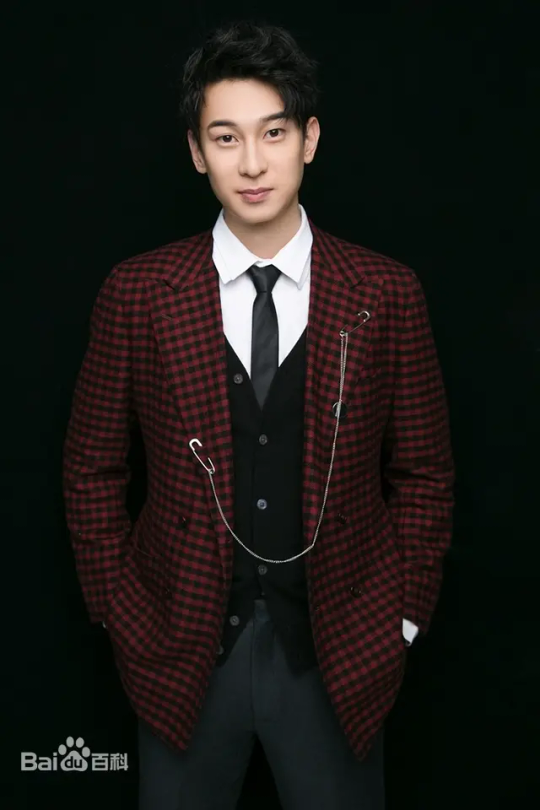
Sun Jian / Yin Pei
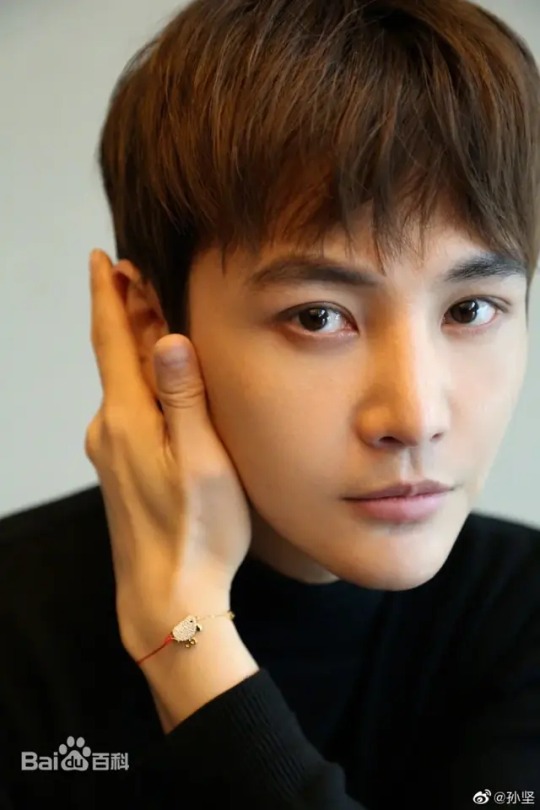
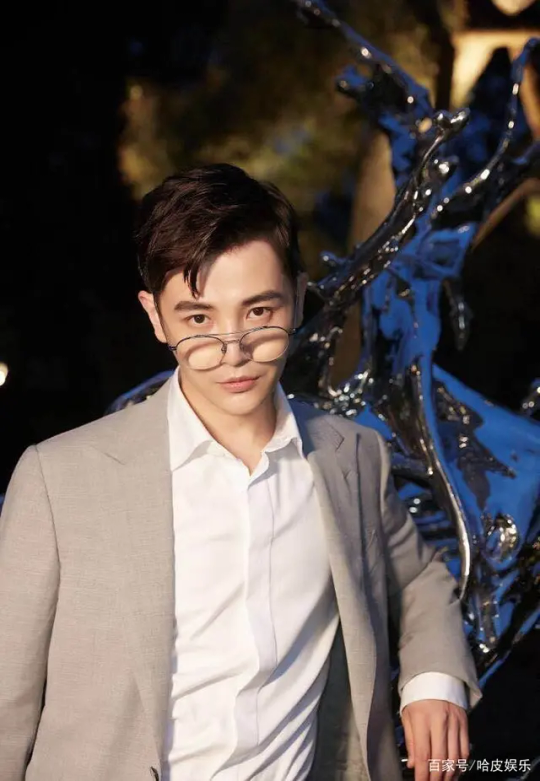
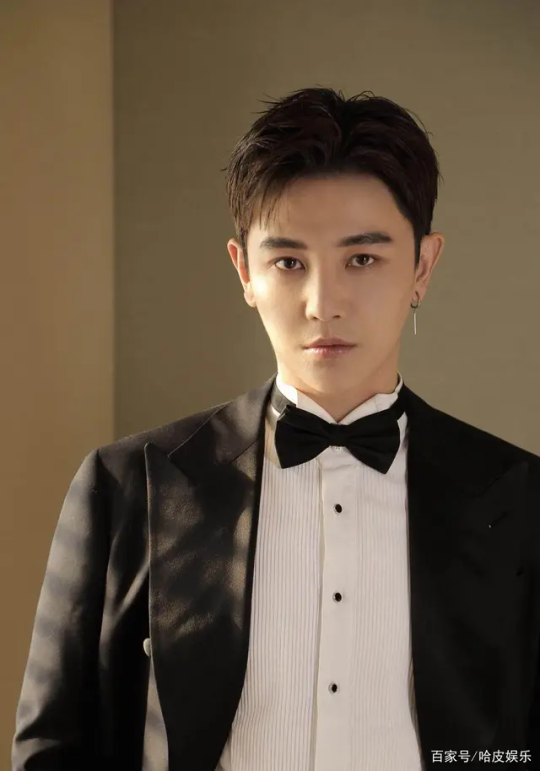
Zhou Jie Qiong / Li Yan
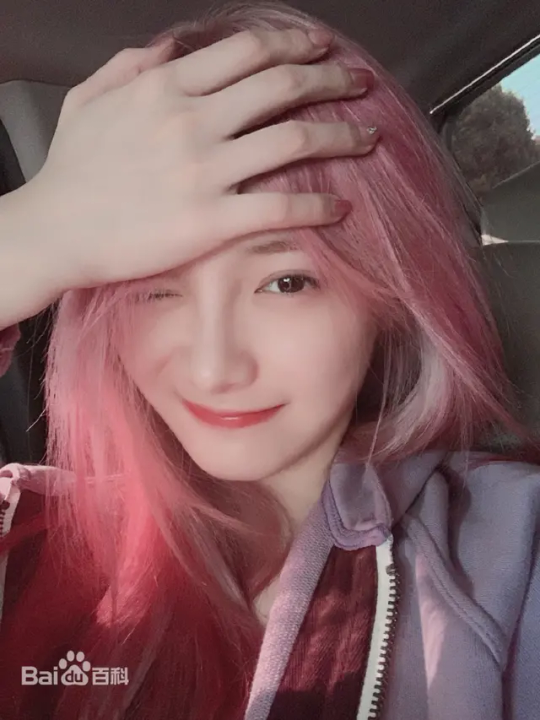

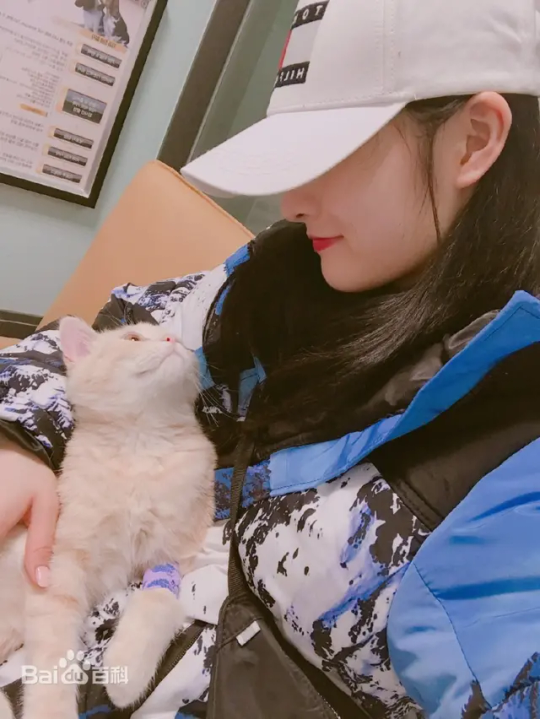
Geng Le / Shen Tianshu
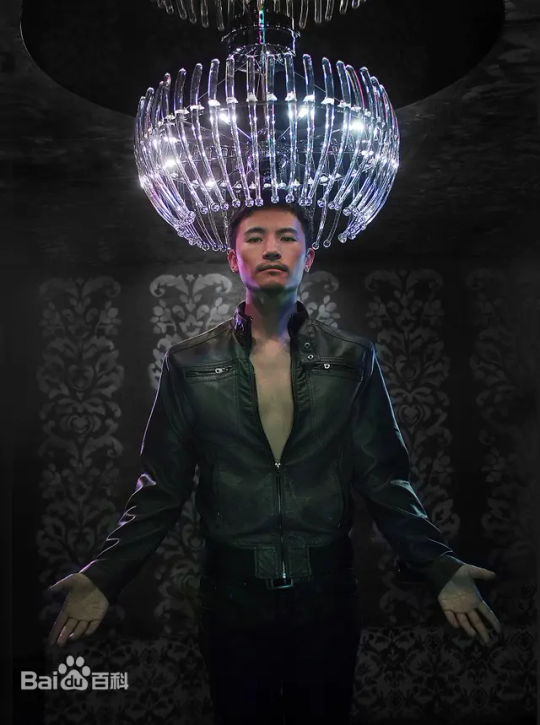
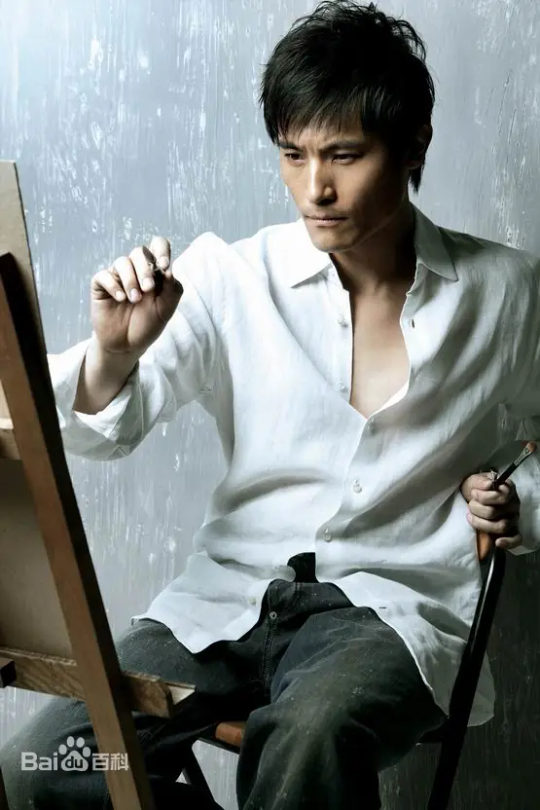
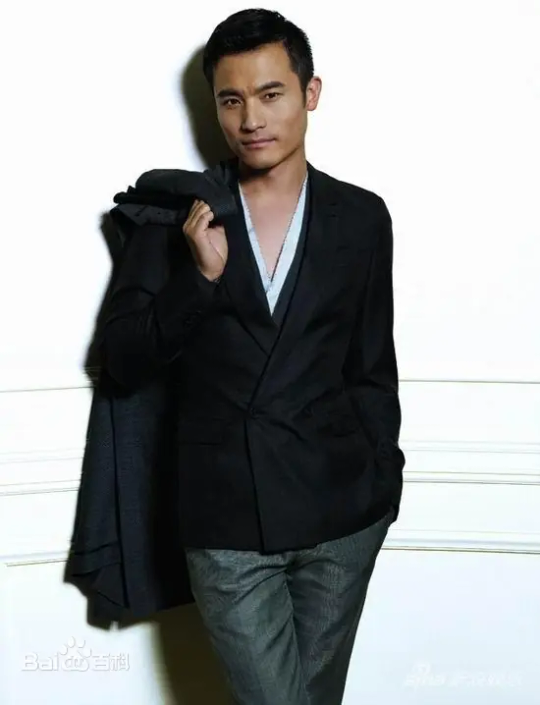
Guo Xin / Mu Xiaoqiao

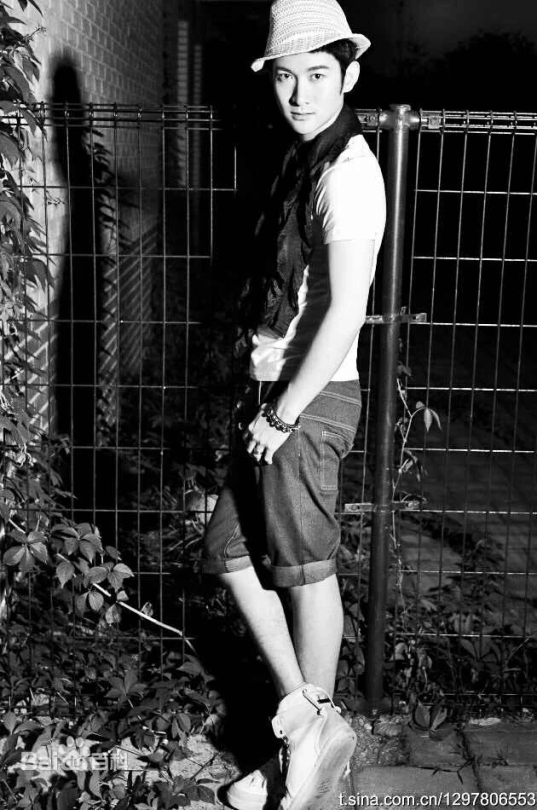

Dong Xuan / Duan Jiuniang

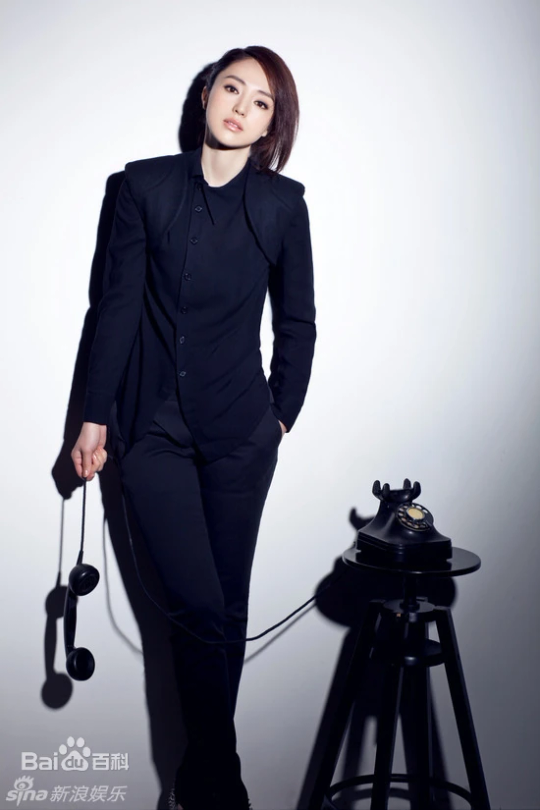
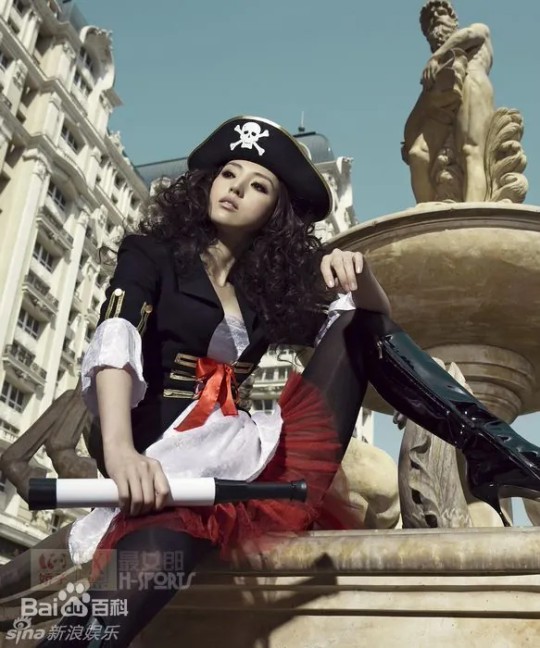
16 notes
·
View notes
Text


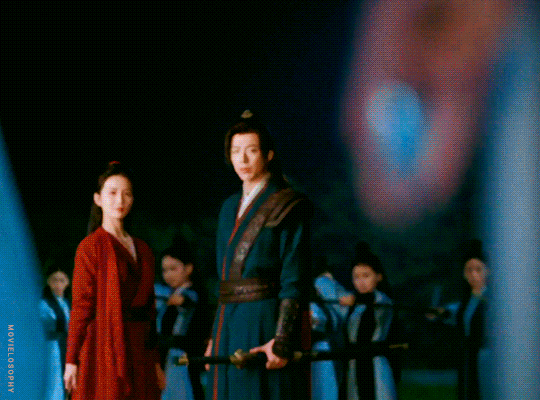


A Journey To Love | Who are you?
#wow#super cool#a journey to love#cdrama#liu yuning#character: ning yuan zhou#liu shi shi#character: ren ru yi#character: ren xin#zhang zhi xi#character: jia ling
136 notes
·
View notes
Text




Cdrama: My Journey To You (2023)
ngarep banget mereka jadi couple😁#esther #estheryu #tianjiarui #myjourneytoyou #cdrama #zhanglinghe
Watch this video on Youtube: https://www.youtube.com/shorts/fYOuQWfFuKo
#My Journey to You#云之羽#Yun Zhi Yu#Cloud Feather#Half of Us#雲之羽#2023#iQiyi#WeTV#cdrama#chinese drama#youtube#shorts#short video#Esther Yu#Yu Shu Xin#Yun Wei Shan#Zhang Ling He#Gong Zi Yu#Ryan Cheng#Yang Hui Xiang#Gong Shang Jue#Tian Jia Rui#Gong Yuan Zheng
11 notes
·
View notes
Text
Interesting Papers for Week 33, 2024
A sparse quantized hopfield network for online-continual memory. Alonso, N., & Krichmar, J. L. (2024). Nature Communications, 15, 3722.
An edge-simplicity bias in the visual input to young infants. Anderson, E. M., Candy, T. R., Gold, J. M., & Smith, L. B. (2024). Science Advances, 10(19).
Running together influences where you look. Brenner, E., Janssen, M., de Wit, N., Smeets, J. B. J., Mann, D. L., & Ghiani, A. (2024). Perception, 53(5–6), 397–400.
Dopamine D2 Receptor Modulates Exercise Related Effect on Cortical Excitation/Inhibition and Motor Skill Acquisition. Curtin, D., Taylor, E. M., Bellgrove, M. A., Chong, T. T.-J., & Coxon, J. P. (2024). Journal of Neuroscience, 44(19), e2028232024.
Control of working memory by phase–amplitude coupling of human hippocampal neurons. Daume, J., Kamiński, J., Schjetnan, A. G. P., Salimpour, Y., Khan, U., Kyzar, M., … Rutishauser, U. (2024). Nature, 629(8011), 393–401.
Drift of neural ensembles driven by slow fluctuations of intrinsic excitability. Delamare, G., Zaki, Y., Cai, D. J., & Clopath, C. (2024). eLife, 12, e88053.3.
A stochastic world model on gravity for stability inference. Huang, T., & Liu, J. (2024). eLife, 12, e88953.3.
Specific exercise patterns generate an epigenetic molecular memory window that drives long-term memory formation and identifies ACVR1C as a bidirectional regulator of memory in mice. Keiser, A. A., Dong, T. N., Kramár, E. A., Butler, C. W., Chen, S., Matheos, D. P., … Wood, M. A. (2024). Nature Communications, 15, 3836.
Cholecystokinin facilitates motor skill learning by modulating neuroplasticity in the motor cortex. Li, H., Feng, J., Chen, M., Xin, M., Chen, X., Liu, W., … He, J. (2024). eLife, 13, e83897.
Wagers for work: Decomposing the costs of cognitive effort. Master, S. L., Curtis, C. E., & Dayan, P. (2024). PLOS Computational Biology, 20(4), e1012060.
Recurrent neural networks that learn multi-step visual routines with reinforcement learning. Mollard, S., Wacongne, C., Bohte, S. M., & Roelfsema, P. R. (2024). PLOS Computational Biology, 20(4), e1012030.
Human mutations in high-confidence Tourette disorder genes affect sensorimotor behavior, reward learning, and striatal dopamine in mice. Nasello, C., Poppi, L. A., Wu, J., Kowalski, T. F., Thackray, J. K., Wang, R., … Tischfield, M. A. (2024). Proceedings of the National Academy of Sciences, 121(19), e2307156121.
Representational drift as a result of implicit regularization. Ratzon, A., Derdikman, D., & Barak, O. (2024). eLife, 12, e90069.3.
Abnormal multisensory temporal discrimination in Parkinson’s disease. Rostami, Z., Salari, M., Mahdavi, S., & Etemadifar, M. (2024). Brain Research, 1834, 148901.
Motivated with joy or anxiety: Does approach-avoidance goal framing elicit differential reward-network activation in the brain? Sakaki, M., Murayama, K., Izuma, K., Aoki, R., Yomogita, Y., Sugiura, A., … Matsumoto, K. (2024). Cognitive, Affective, & Behavioral Neuroscience, 24(3), 469–490.
A non-image-forming visual circuit mediates the innate fear of heights in male mice. Shang, W., Xie, S., Feng, W., Li, Z., Jia, J., Cao, X., … Yuan, X.-B. (2024). Nature Communications, 15, 3746.
A dynamic neural resource model bridges sensory and working memory. Tomić, I., & Bays, P. M. (2024). eLife, 12, e91034.3.
A Neural Decision Signal during Internal Sampling from Working Memory in Humans. van Ede, F., & Nobre, A. C. (2024). Journal of Neuroscience, 44(19), e1475232024.
Increased flexibility of CA3 memory representations following environmental enrichment. Ventura, S., Duncan, S., & Ainge, J. A. (2024). Current Biology, 34(9), 2011-2019.e7.
Multiplexed representation of others in the hippocampal CA1 subfield of female mice. Zhang, X., Cao, Q., Gao, K., Chen, C., Cheng, S., Li, A., … Miao, C. (2024). Nature Communications, 15, 3702.
#neuroscience#science#research#brain science#scientific publications#cognitive science#neurobiology#cognition#psychophysics#neurons#neural computation#neural networks#computational neuroscience
11 notes
·
View notes
Text
Warriors Orochi Substitute Officers
When playing a battle as a character that is an ally in the battle, a generic officer will take their place. Substitute officer allocations were all over the place in Warriors Orochi Z, but in Warriors Orochi 3, efforts were made to standardise them. Such a shame Koei Tecmo got lazy and scrapped that system in Warriors Orochi 4.
Anyway, here is a list of substitute officers in Warriors Orochi 3, combined with my substitute officer picks for the hypothetical Warriors Orochi: The Recollective (hereafter shortened to WOX) and a hypothetical Warriors Orochi 4 that I will cover in its retrospective.
DW-Wei 三國-魏 (20)
Xiahou Dun 夏侯惇 → Xiahou Mao 夏侯楙 Dian Wei 典韋 → Cao Anmin 曹安民 Zhang Liao 張遼 → Zhang Hu 張虎 Cao Cao 曹操 → Cao Ang 曹昂 Xu Zhu 許褚 → Cao Hong 曹洪 (WO3) → Xu Yi 許儀 (WOX/WO4) Xiahou Yuan 夏侯淵 → Xiahou Wei 夏侯威 Xu Huang 徐晃 → Man Chong 満寵 (WO3) → Xu Shang 徐商 (WOX/WO4) Zhang He 張郃 → Xin Pi 辛毗 (WO3) → Gao Lan 高覧 (WOX/WO4) Cao Ren 曹仁 → Cao Hong 曹洪 Cao Pi 曹丕 → Cao Zhi 曹植 Zhenji 甄姫 → Yuan Xi 袁煕 Cai Wenji 蔡文姫 → Cai Yong 蔡邕 Jia Xu 賈詡 → Cheng Yu 程昱 (WO3) → Hu Che’er 胡車児 (WOX/WO4)* Pang De 龐徳 → Pang Hui 龐会 Wang Yi 王異 → Yang Fu 楊阜 Guo Jia 郭嘉 → Xun Yu 荀彧 (WO3) → Xin Pi 辛毗 (WOX/WO4) Yue Jin 楽進 → Yue Chen 楽綝 Li Dian 李典 → Jia Kui 賈逵 Yu Jin 于禁 → Man Chong 満寵 Xun Yu 荀彧 → Cheng Yu 程昱
*Xun You replaces Jia Xu in WOX Wei Chapter 11: Battle of Shizugatake
DW-Wu 三國-呉 (19)
Zhou Yu 周瑜 → Lu Su 魯粛 (WO3) → Zhuge Jin 諸葛瑾 (WOX/WO4) Lu Xun 陸遜 → Zhu Ran 朱然 (WO3) → Lu Kang 陸抗 (WOX/WO4) Sun Shangxiang 孫尚香 → Sun Jing 孫静 (WO3) → Sun Ben 孫賁 (WOX/WO4) Gan Ning 甘寧 → Su Fei 蘇飛 Sun Jian 孫堅 → Sun Jing 孫静 Taishi Ci 太史慈 → Taishi Xiang 太史享 Lu Meng 呂蒙 → Pan Zhang 潘璋 Huang Gai 黄蓋 → Cheng Pu 程普 Zhou Tai 周泰 → Han Dang 韓当 (WO3) → Jiang Qin 蒋欽 (WOX/WO4) Ling Tong 凌統 → Ling Cao 凌操 Sun Ce 孫策 → Sun Shao 孫韶 Sun Quan 孫権 → Zhuge Jin 諸葛瑾 (WO3) → Sun Deng 孫登 (WOX/WO4) Xiaoqiao 小喬 → Zhang Zhao 張昭 Daqiao 大喬 → Sun Kuang 孫匡 Ding Feng 丁奉 → Zhu Huan 朱桓 Lianshi 練師 → Sun Lang 孫朗 Lu Su 魯粛 → Quan Zong 全琮 Han Dang 韓当 → Xu Sheng 徐盛 Zhu Ran 朱然 → Zhu Zhi 朱治
DW-Shu 三國-蜀 (22 + 1) Includes Zhou Cang from DW9 for WO4 (carryover from Warriors All-Stars)
Zhao Yun 趙雲 → Chen Dao 陳到 (WO3) → Zhao Tong 趙統 (WOX/WO4) Guan Yu 関羽 → Guan Xing 関興 (WO3) → Zhou Cang 周倉 (WOX) → Wang Fu 王甫 (WO4) Zhang Fei 張飛 → Zhang Bao 張苞 (WO3) → Sun Qian 孫乾 (WOX/WO4) Zhuge Liang 諸葛亮 → Jiang Wan 蒋琬 Liu Bei 劉備 → Jian Yong 簡雍 Ma Chao 馬超 → Ma Teng 馬騰 Huang Zhong 黄忠 → Yan Yan 厳顔 Wei Yan 魏延 → Yi Ji 伊籍 Guan Ping 関平 → Zhou Cang 周倉 (WO3) → Liao Hua 廖化 (WOX/WO4) Pang Tong 龐統 → Fa Zheng 法正 (WO3) → Chen Dao 陳到 (WOX/WO4) Yueying 月英 → Ma Liang 馬良 (WO3) → Ma Su 馬謖 (WOX/WO4) Jiang Wei 姜維 → Fei Yi 費禕 Liu Shan 劉禅 → Liu Feng 劉封 Xingcai 星彩 → Zhang Bao 張苞 (WO3) → Zhang Shao 張紹 (WO4) Ma Dai 馬岱 → Han Sui 韓遂 Guan Suo 関索 → Guan Xing 関興 (WO3) → Guan Yi 関彝 (WOX/WO4) Bao Sanniang 鮑三娘 → Guan Yi 関彝 (WO3) → Bao Su 鮑素 (WOX/WO4) Xu Shu 徐庶 → Ma Liang 馬良 Guan Xing 関興 → Wang Fu 王甫 (WOX) → Guan Tong 関統 (WO4) Zhang Bao 張苞 → Zhang Yi 張翼 Guan Yinping 関銀屏 → Xiang Lang 向朗 Fa Zheng 法正 → Zhang Song 張松 Zhou Cang 周倉 → Pei Yuanshao 裴元紹 (Replaces Sophitia ソフィーティア → N/A なし)
DW-Jin 三國-晋 (12)
Sima Yi 司馬懿 → Sima Lang 司馬朗 Sima Shi 司馬師 → Sima Fu 司馬孚 Sima Zhao 司馬昭 → Sima Yan 司馬炎 Deng Ai 鄧艾 → Deng Zhong 鄧忠 Wang Yuanji 王元姫 → Sima You 司馬攸 Zhong Hui 鍾会 → Chen Tai 陳泰 Zhuge Dan 諸葛誕 → Wen Qin 文欽 Xiahou Ba 夏侯覇 → Xiahou Hui 夏侯恵 Guo Huai 郭淮 → Cao Zhen 曹真 Jia Chong 賈充 → Hu Lie 胡烈 Wen Yang 文鴦 → Wen Hu 文虎 Zhang Chunhua 張春華 → Sima Wang 司馬望
DW-Other 三國-他 (10)
Diaochan 貂蝉 → Wang Yun 王允 Lu Bu 呂布 → Chen Gong 陳宮 (WO3) → Gao Shun 高順 (WOX/WO4) Dong Zhuo 董卓 → Dong Min 董旻 Yuan Shao 袁紹 → Yuan Tan 袁譚 Zhang Jiao 張角 → Zhang Bao 張宝 Meng Huo 孟獲 → King Wutugu 兀突骨 Zhurong 祝融 → King Mulu 木鹿大王 Zuo Ci 左慈 → Yu Ji 于吉 Chen Gong 陳宮 → Xu Si 許汜 Lu Lingqi 呂玲綺 → Cheng Lian 成廉
SW-SW1 戦国-戦国1 (16)
Yukimura Sanada 真田幸村 → Masayuki Sanada 真田昌幸 (WO3/WOX) → Nobutsuna Sanada 真田信綱 (WO4) Keiji Maeda 前田慶次 → Kazumasu Takigawa 滝川一益 Nobunaga Oda 織田信長 → Nobutada Oda 織田信忠 Mitsuhide Akechi 明智光秀 → Hidemitsu Akechi 明智秀満 Goemon Ishikawa 石川五右衛門 → Shirōjirō Chaya 茶屋四郎次郎 Kenshin Uesugi 上杉謙信 → Kagekatsu Uesugi 上杉景勝 (WO3) → Norimasa Uesugi 上杉憲政 (WOX/WO4) Oichi お市 → Kazumasa Isono 磯野員昌 Okuni 阿国 → Yukinaga Asano 浅野幸長 Kunoichi くのいち → Kansuke Yamamoto 山本勘助 Magoichi Saika 雑賀孫市 → Rairen Shimozuma 下間頼廉 (WO3) → Morishige Tsuchihashi 土橋守重 (WOX/WO4) Shingen Takeda 武田信玄 → Nobukado Takeda 武田信廉 Masamune Date 伊達政宗 → Hidemune Date 伊達秀宗 Nō 濃姫 → Mitsuharu Fuwa 不破光治 Hanzō Hattori 服部半蔵 → Mototada Torii 鳥居元忠 Ranmaru Mori 森蘭丸 → Yoshinari Mori 森可成 Hideyoshi Toyotomi 豊臣秀吉 → Hideyori Toyotomi 豊臣秀頼
SW-SW2 戦国-戦国2 (18)
Yoshimoto Imagawa 今川義元 → Sessai Taigen 太原雪斎 Tadakatsu Honda 本多忠勝 → Tadamasa Honda 本多忠政 Ina 稲姫 → Nobuyuki Sanada 真田信之 (WO3) → Tadatomo Honda 本多忠朝 (WOX/WO4) Ieyasu Tokugawa 徳川家康 → Hidetada Tokugawa 徳川秀忠 (WO3/WOX) → Nobuyasu Matsudaira 松平信康 (WO4) Mitsunari Ishida 石田三成 → Yoshitsugu Ōtani 大谷吉継 (WO3) → Yukinaga Konishi 小西行長 (WOX/WO4) Nagamasa Azai 浅井長政 → Hisamasa Azai 浅井久政 Sakon Shima 島左近 → Teruzumi Akashi 明石全登 Yoshihiro Shimazu 島津義弘 → Toyohisa Shimazu 島津豊久 (WO3) → Yoshihisa Shimazu 島津義久 (WOX/WO4) Ginchiyo Tachibana 立花誾千代 → Yoshinori Ōtomo 大友義乗 Kanetsugu Naoe 直江兼続 → Kagetsuna Naoe 直江景綱 Nene ねね → Hidenaga Toyotomi 豊臣秀長 Kotarō Fuma 風魔小太郎 → Tsunashige Hōjō 北条綱成 Musashi Miyamoto 宮本武蔵 → Nobutsuna Kamiizumi 上泉信綱 Toshiie Maeda 前田利家 → Toshinaga Maeda 前田利長 Motochika Chōsokabe 長宗我部元親 → Chikayasu Kōsokabe 香宗我部親泰 (WO3) → Nobuchika Chōsokabe 長宗我部信親 (WOX/WO4) Gracia ガラシャ → Tadaoki Hosokawa 細川忠興 Kojirō Sasaki 佐々木小次郎 → Kanesuke Susukida 薄田兼相 Katsuie Shibata 柴田勝家 → Katsumasa Shibata 柴田勝政
SW-SW3 戦国-戦国3 (12)
Kiyomasa Katō 加藤清正 → Yasuharu Wakisaka 脇坂安治 Kanbei Kuroda 黒田官兵衛 → Nagamasa Kuroda 黒田長政 Muneshige Tachibana 立花宗茂 → Korenobu Yufu 由布惟信 Kai 甲斐姫 → Ujinaga Narita 成田氏長 Ujiyasu Hōjō 北条氏康 → Ujimasa Hōjō 北条氏政 (WO3) → Ujitsuna Hōjō 北条氏綱 (WOX/WO4) Hanbei Takenaka 竹中半兵衛 → Shigetoshi Takenaka 竹中重利 Motonari Mōri 毛利元就 → Terumoto Mōri 毛利輝元 Aya 綾御前 → Kagetora Uesugi 上杉景虎 Masanori Fukushima 福島正則 → Yoshiaki Katō 加藤嘉明 Takatora Tōdō 藤堂高虎 → Takayoshi Tōdō 藤堂高吉 Naotora Ii 井伊直虎 → Naomori Ii 井伊直盛 Munenori Yagyū 柳生宗矩 → Munetoshi Yagyū 柳生宗厳
SW4 戦国-戦国4 (10 + 8) Includes characters from Spirit of Sanada for WO4
Nobuyuki Sanada 真田信之 → Nobumasa Sanada 真田信政 Yoshitsugu Ōtani 大谷吉継 → Yoshiharu Ōtani 大谷吉治 Hisahide Matsunaga 松永久秀 → Hisamichi Matsunaga 松永久通 Kojūrō Katakura 片倉小十郎 → Shigenaga Katakura 片倉重長 Kagekatsu Uesugi 上杉景勝 → Chikanori Suibara 水原親憲 Takakage Kobayakawa 小早川隆景 → Motoharu Kikkawa 吉川元春 Koshōshō小少将 → Chikayasu Kōsokabe 香宗我部親泰 Toyohisa Shimazu 島津豊久 → Iehisa Shimazu 島津家久 Lady Hayakawa 早川殿 → Ujimasa Hōjō 北条氏政 Naomasa Ii 井伊直政 → Naotaka Ii 井伊直孝
Masayuki Sanada 真田昌幸 → Yukitaka Sanada 真田幸隆 Chacha 茶々 → Harunaga Ōno 大野治長 Sasuke 佐助 → Masasuke Ideura 出浦昌相 Katsuyori Takeda 武田勝頼 → Nobushige Takeda 武田信繁 Hidetada Tokugawa 徳川秀忠 → Hideyasu Yūki 結城秀康 Lady Muramatsu 村松殿 → Shigemasa Oyamada 小山田茂誠 Naiki Takanashi 高梨内記 → Sakyō Raifukuji 来福寺左京 Lady Yamanote 山手殿 → Masateru Sanada 真田昌輝
Orochi-Orochi1 遠呂智-遠1 (14)
Orochi 遠呂智 → Diamondback 蛟 (WO3) → Lancehead 以津真天 (WOX/WO4) Da Ji 妲己 → Bushmaster 猪豚蛇 (WOX) → Fornax 紂王 (WO3/WO4) Taigong Wang 太公望 → Vela 楊戩 (WO3) → Aquila 南華仙人 (WOX/WO4) Fu Xi 伏犠 → Aquila 南華仙人 (WO3) → Zhang Liang 張梁 (WOX/WO4) Nuwa 女媧 → Pyxis 神農 (WO3) → Ophiuchus 李鉄拐 (WO3U) → Cygnus 武吉 (WOX/WO4) Sun Wukong 孫悟空 → Coachwhip 野槌 Yoshitsune Minamoto 源義経 → Shigenari Kimura 木村重成 Kiyomori Taira 平清盛 → Boomslang 隠形鬼 Himiko 卑弥呼 → Goldenrod 悪樓 (WOX) → Musca 難升米 (WO3/WO4) Orochi X 真・遠呂智 → Coltan 魔計奴鬼 (WOX) → Ijū 異獣 (WO3/WO4) Dodomeki 百々目鬼 → Leaflitter 瘧鬼 Gyūki 牛鬼 → Nosean 夜刀神 Sanzang 三蔵法師 → Sha Wujing 沙悟浄 Benkei 弁慶 → Rairen Shimozuma 下間頼廉
Orochi-Orochi2 遠呂智-遠2 (12)
Kaguya かぐや → Lepus 月夜見 Susano’o 素戔嗚 → Lacerta 五十猛 Nezha 哪吒 → Grus 金吒 Shūten Dōji 酒呑童子 → Centaurus 茨木童子 Seimei Abe 安倍晴明 → Vela 楊戩 (WO3) → Crux 天火明 (WO4) Shennong 神農 → Lacerta 五十猛 (WO3) → Ophiuchus 李鉄拐 (WOX/WO4) Tamamo 玉藻前 → Cottonmouth 黄泉軍 Yinglong 応龍 → Vela 楊戩 (WO3) → Wei Hu 韋護 (WO4) Nezha (human) 哪吒(人型) → Vulpecula 木吒 Kyūbi 九尾の狐 → Itaoni ���鬼 Hundun 渾沌 → Hammerjaw 魍魎 Diamondback 蛟 → Mamushi 飛頭蛮
Orochi-Orochi3 遠呂智-遠3 (7 + 7) Includes characters from DW Multi Raid 2 and DW Godseekers
Qin Shihuang 始皇帝 → Wang Wan 王綰 Qin Shihuang (Young) 始皇帝 → She Jian 涉間 Xiang Yu 項羽 → Xiang Bo 項伯 Lady Yu 虞美人 → Xiang Zhuang 項莊 Xi Wangmu 西王母 → Ursa 北斗 Huang Quan 黄泉 → Periclase 螭首 Muwang 穆王 → Centaurus 南斗
Yang Jian 楊戩 → Zhu Bajie 猪八戒 Lei Bin 雷斌 → Zhao Guang 趙広 Lixia 黎霞 → Thunder 経津主 Chiyou 蚩尤 → Feldspar 狻猊 Yoshitsune Minamoto (Young) 源義経 → Yoritomo Minamoto 源頼朝 Kiyomori Taira (Young) 平清盛 → Shigemori Taira 平重盛 Benkei (Young) 弁慶 → Yoshinari Ichijō 一条能成
Orochi-Minamoto 遠呂智-源 (13) Includes collaboration characters from WO3 and Warriors All-Stars
Ryu Hayabusa リュウ・ハヤブサ → Sasuke サスケ Rachel レイチェル → Saizō サイゾウ Momiji 紅葉 → Seikai セイカイ Joan of Arc ジャンヌ・ダルク → Auriga 白鶴童子 Nemea ネメア → Camelopardalis 黄飛虎 Achilles アキレウス → Sagitta 聞仲 Sterkenberg ステルケンブルク → Draco 竜鬚虎 Ōka 桜花 → Yoshisada Yasuda 安田義定 Horō ホロウ → Yoshinori Yamana 山名義範 Tokitsugu 時継 → Hiromoto Ōe 大江広元 Opoona オプーナ → Yoshihisa Washio 鷲尾義久 Sophie ソフィー → Zou Yao 騶揺 Plachta プラフタ → Shu Pan 蜀泮
Orochi-Taira 遠呂智-平 (13) Includes collaboration characters from WO3 and Warriors All-Stars
Ayane あやね → Danzō ダンゾウ Kasumi かすみ → Jiraiya ジライヤ Hajime Arima 有馬一 → Kanetaka Yamaki 山木兼隆 Darius ダリウス → Ietsuna Hasuike 蓮池家綱 William Adams ウィリアム・アダムス → Kaneyasu Senō 妹尾兼康 Marie Rose マリー・ローズ → Tadakiyo Fujiwara 藤原忠清 Honoka ほのか → Toshitō Hirata 平田俊遠 Millennia ミレニア → Mu Zhu 無諸 Laegrinna レグリナ → Zhao Tuo 趙佗 Rio リオ → Lu Wan 盧綰 Nobunyaga Oda 織田のぶニャが → Katsunaga Oda 織田勝長 Arnice アーナス → Ji Zhun 箕準 Christophorus クリストフォラス → Wei Man 衛滿
Total: 214 characters
#dynasty warriors#samurai warriors#warriors orochi#koei tecmo#koei warriors#koei warriors retrospective extras
2 notes
·
View notes
Text
佛說摩訶迦羅大黑天神經 Fo shuo mo he jia lo da hei tian shen jing
御大黑誓願云 yu da hei shi yuan yun
貧窮眾生與福力 ping qiong zhong sheng yu fu li
短命者成長命 duan ming zhe cheng chang ming
病眾生與良藥 bing zhong sheng yu liang yao
無智者成智者。 wu zhi zhe cheng zhi zhe.
南無本師釋迦牟尼佛(×3) Na Mo Ben Shi Shi Jia Mo Ni Fo
惡心者成善心 er xin zhe cheng shan xin
開經偈 kai jing jie
無上甚深微妙法 wu shang shen shen wei miao fa
我今見聞得受持 wo jin jian wen de shou chi
百千萬劫難遭遇 bai qian wan jie nan zhao yu
願解如來真實義。 yuan jie ru lai zhen shi yi.
佛說摩訶迦羅大黑天神經 Fo shuo mo he jia lo da hei tian shen jing
爾時如來告大眾言今此大會中有大菩薩· er shi ru lai gao da zhong yan jin ci da hui zhung you da pu sha
名日大福德自在圓滿菩薩·此菩薩往昔成等正覺· ming yue da fu de zi zai yuan man pu sha ci pu sha wang xi cheng deng zhen jue
號大摩尼珠王如來今以自在業力故 hao da mo ni zhu wang ru lai jin yi zi zai ye li gu
來娑婆世界·顯大黑天神是大菩薩大會中lai suo po shi jie xian da hei tian shen shi da pu sha da hui zhung
即起座合掌白佛言,我於一切貧窮無福眾生 ji qi zuo he zhang bai fo yan wo yu yi qie ping qiong wu fu zhong sheng
為與大福德·今現優婆塞形眷屬七母女天 wei yu da fu de jin xian you po sai xing juan shu qi mu nue tian
三界游現欲與一切眾生福德· san jie you xian yue yu yi qie zhong sheng fu de
惟願世尊為我說大福德圓滿陀羅尼· wei yuan shi zun wei wo shuo da fu de yuan man tuo luo ni
爾時世尊開貌含笑說咒曰: er shi shi zun kai mao han xiao shuo zhou yue
曩謨三曼多慕噠喃喃摩訶迦羅耶娑婆訶 Namo Samanta Buddhanam Om Mahakalaya Svaha
爾時世尊告大眾言,此天神咒
er shi shi zun gao da zhong yan ci tian shen zhou
過去無量諸佛出世不說若未來惡世中·
guo qu wu liang zhu fo chu shi bu shuo ruo wei lai er shi zhung
有諸貧窮人·聞此陀羅尼名者·
you zhu ping qiong ren wen ci tuo luo ni ming zhe
當知是人·降大摩尼寶珠·湧出無量珍寶 dang zhi shi ren jiang da mo ni bao zhu yong chu wu liang zhen bao
爾時大黑天神白佛言・若有末法中眾生持此咒者·
er shi da hei tian shen bai fo yan ruo you mo fa zhung zhong sheng chỉ ci zhou zhe
我體若五尺·若三尺·若五寸·刻其形象 wo ti ruo wu chi ruo san chi ruo wu cun ke qi xing xiang
安置伽藍·若崇敬家內·我遣七母女天眷屬 an zhi qie lan ruo cong jing jia nei wo qian qi mu nue tian juan shu
八萬四千人福德神·遊行十方每日供養一千人 ba wan shi qian ren fu de shen yiu xing shi fang mei ri gong yang yi qian ren
若我所說有虛妄者·永墮惡趣不還本覺· ruo wo suo shuo you xu wang zhe yong duo er qu bu huan ben jue
若又以種種珍菓美酒等供養者將降甘露 ruo you yi zhong zhong zhen guo mei jiu deng gong yang zhe jiang jiang gan lu
時一起大眾皆大歡喜·信受奉行作禮而去 shi yi qi da zhong jie da huan xi xin shou feng xing zuo li er qu.
大黑天讚 da hei tian zan
願諸世界常安穩
Yuan zhu shi jie chang an wen
無邊福智益群生 Wu bian fu zhi yi qun sheng
所有罪障並消除 Shuo you zui zhang bing siao chu
遠離眾苦歸圓寂 Yuan li zhong ku gui yuan ji
大黑天神咒 da hei tian shen zhou
曩謨三曼多·慕噠喃·唵·摩訶迦羅耶娑婆訶。。。 Namo Samanta Buddhanam Om Mahakalaya Svaha
2 notes
·
View notes